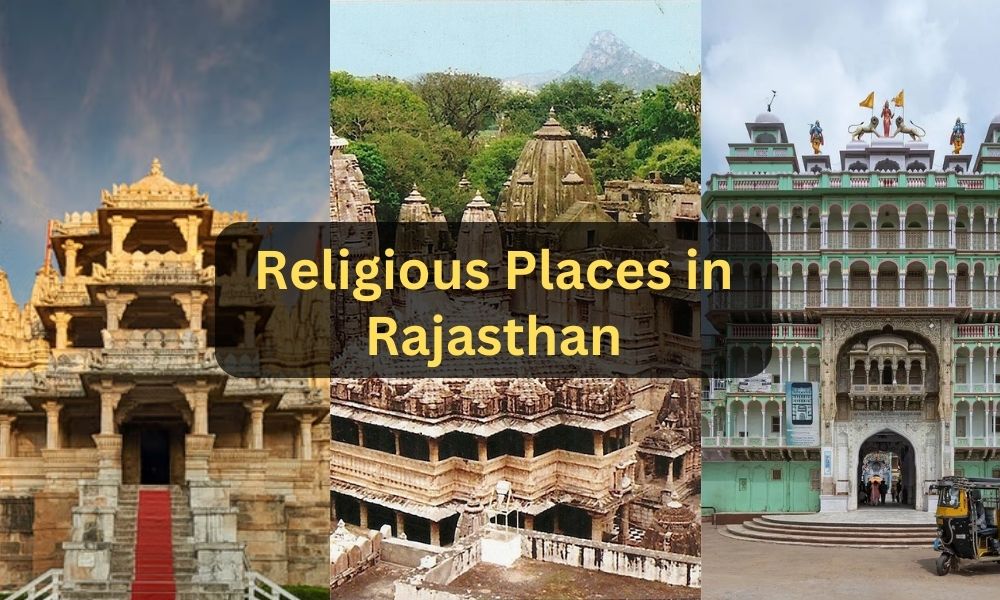The Living Canvas: Art Forms of the Desert State

Rajasthan, located in the northwestern part of India, is widely known for its royal forts, colourful festivals, and desert landscape. However, beyond its architecture and attire, the state is a vibrant hub of visual storytelling through traditional art. These art forms have evolved through centuries, reflecting the spiritual beliefs, everyday life, and cultural practices of local communities.
Often passed down through generations, these artworks were not created solely for aesthetic purposes. Instead, they served as tools for education, devotion, and preservation of folklore. Whether painted on temple walls, scrolls, wooden panels, or fabric, each form carries its unique style and significance. This article explores the living traditions of Rajasthan’s art, examining their origins, symbolism, and techniques.
What Are the Origins of Rajasthani Art Forms?
The roots of Rajasthani art lie deep within its social and religious structures. Centuries ago, artisans and storytellers collaborated to create art that was mobile, interpretive, and accessible to rural audiences. The content often derived from sacred texts, local legends, and historical events, while the style was guided by regional resources and customs.
Initially, temple murals and palace frescoes dominated the artistic landscape, often commissioned by kings or religious institutions. Over time, art became more democratic—travelling storytellers and community artisans began crafting smaller, transportable pieces. These formats made it possible for remote villages to experience visual narratives, even without access to large monuments.
The shift from elite to folk art marked a major transition in the accessibility of visual culture. Art was no longer confined to walls and palaces but became part of public performance and domestic spaces.
How Do Traditional Art Forms Reflect Rajasthani Identity?
Each art form in Rajasthan holds specific ties to its local environment, community practices, and religious frameworks. The visual language—comprising colours, symbols, and figures—offers clues into regional values and beliefs. For instance, red and yellow dominate many compositions, reflecting auspiciousness and divine energy. Similarly, the presence of flora, fauna, and architectural motifs situates the artwork within its local geography.
Visual narratives often address the relationship between the human and the divine. Paintings portray scenes of worship, sacrifice, love, and cosmic order. This reflects a worldview where every action and emotion is part of a larger spiritual rhythm.
In certain traditions, such as Kaavad Art, this symbolic representation is deeply layered. The Kaavad, a painted wooden shrine, opens panel by panel to reveal stories from Hindu epics. Each door and image is carefully placed to align with ritual storytelling. The Kaavad is not just a visual object but a medium of interaction between the narrator and the audience.
What Techniques and Materials Define Rajasthani Art?
Traditional Rajasthani artists work with natural materials sourced from their surroundings. Colours are often made from minerals, vegetables, and flowers. Brushes may be fashioned from animal hair or local plant fibres. The use of handmade paper, wood, cloth, and sometimes even walls as canvases speaks to the resourcefulness of the artists.
Some techniques include:
-
Layering of bold outlines followed by infill of colours.
-
Use of symbolic proportion, where divine figures are shown larger than human ones.
-
Flat spatial composition, where elements are placed without perspective to highlight narrative clarity.
-
Repetitive motifs, such as peacocks, lotuses, and elephants, used to reinforce symbolic themes.
Despite the diversity in technique, all Rajasthani art forms maintain a balance between visual richness and symbolic depth. Each line and colour choice serves a narrative or spiritual purpose.
What Are the Major Narrative Styles in Desert Art?
Rajasthan’s art is deeply narrative, with each form designed to tell a story rather than merely decorate a space. These narrative styles often correspond to performance traditions. In rural areas, painting was often accompanied by songs, chants, and oral narration.
Scroll paintings, for example, are unrolled as the story progresses. Cloth-based art, hung during rituals or festivals, helps visualise divine events for illiterate audiences. These interactions between image and speech have helped preserve folklore across generations.
An excellent example is the Phad painting tradition, in which large scrolls are painted with stories of local deities like Pabuji or Devnarayan. These scrolls are used in nightly performances by Bhopa singers, who unfold the scroll and narrate the scenes. Today, you can find options for Phad Painting Online, allowing a wider audience to access and study this narrative form.
How Is Nature Represented in Rajasthani Art?
Nature plays a symbolic and aesthetic role in Rajasthani paintings. Given the arid landscape of the region, natural imagery often serves as a reminder of fertility, prosperity, and divine presence. Trees are often depicted as shelters for sages or resting places for divine figures. Animals such as camels, elephants, and birds feature prominently as both companions and symbols.
Birds, in particular, hold cultural and spiritual significance. They represent themes of freedom, love, and communication with higher realms. In visual compositions, they are not just decorative fillers but often carry a metaphorical role. The peacock, for instance, symbolises both beauty and seasonal change.
The series titled Bird on Canvas reflects how avian imagery is used across various painting styles to connect the human world with nature and spirit. These works often focus on balance, movement, and the interconnectedness of living beings.
What Social and Cultural Functions Do These Art Forms Serve?
Rajasthani art is not created in isolation. It emerges from and contributes to the collective life of communities. These artworks often appear during life-cycle events such as births, marriages, and funerals. They are also part of religious festivals, village fairs, and temple rituals.
Besides marking special occasions, art also functions as a mode of education. In villages with low literacy rates, visual narratives communicate ethics, history, and spiritual lessons. Children grow up watching these performances and learning the stories through repeated exposure.
These art forms also reinforce social identity. Communities such as the Bhopas, Jangids, and Meenas are known for their particular contributions to painting and storytelling. Art becomes a way to assert group identity and pass on skills through apprenticeships.
What Challenges and Changes Do These Art Forms Face Today?
Like many traditional practices, Rajasthani art faces challenges from modernisation, digital media, and changing audience expectations. Younger generations are drawn towards new occupations, leading to a decline in the number of skilled artisans. Meanwhile, market-driven adaptations often oversimplify or distort original styles to suit commercial needs.
There’s also the risk of cultural erosion. When art is detached from its original context—be it ritual, performance, or community—it can lose its deeper meanings. This has sparked efforts from scholars, museums, and NGOs to document, archive, and support these traditions.
At the same time, some artists have adapted to contemporary platforms. The online availability of traditional artwork allows for both preservation and reinterpretation. While this opens up new opportunities, it also raises questions about ownership, authenticity, and cultural rights.
How Can These Traditions Be Preserved Responsibly?
Responsible engagement with folk art involves more than buying or displaying it. It requires understanding its cultural context, recognising the work of individual artisans, and supporting sustainable practices. Here are some ways to do that:
-
Participate in community-led workshops that include both history and technique.
-
Support direct artist collaborations, ensuring fair compensation and credit.
-
Read about the tradition’s function in ritual, education, and storytelling.
-
Avoid mass-produced replicas that strip the art of its originality.
-
Document oral histories, techniques, and meanings through research or field visits.
Preservation is not just about keeping art alive but about respecting the ecosystems that nurture it—families, festivals, and spiritual practices.
What Does the Future Hold for Rajasthani Art?
The future of Rajasthani art depends on its ability to stay rooted while adapting to changing times. While there is a risk of oversimplification through digital formats, there is also potential for renewed interest and cross-cultural dialogue. Academic studies, exhibitions, and online platforms can help make these traditions part of global conversations about identity, sustainability, and creativity.
To ensure that these living canvases do not fade, we must look beyond aesthetics. They are more than colours and stories—they are records of a people’s way of seeing the world.





